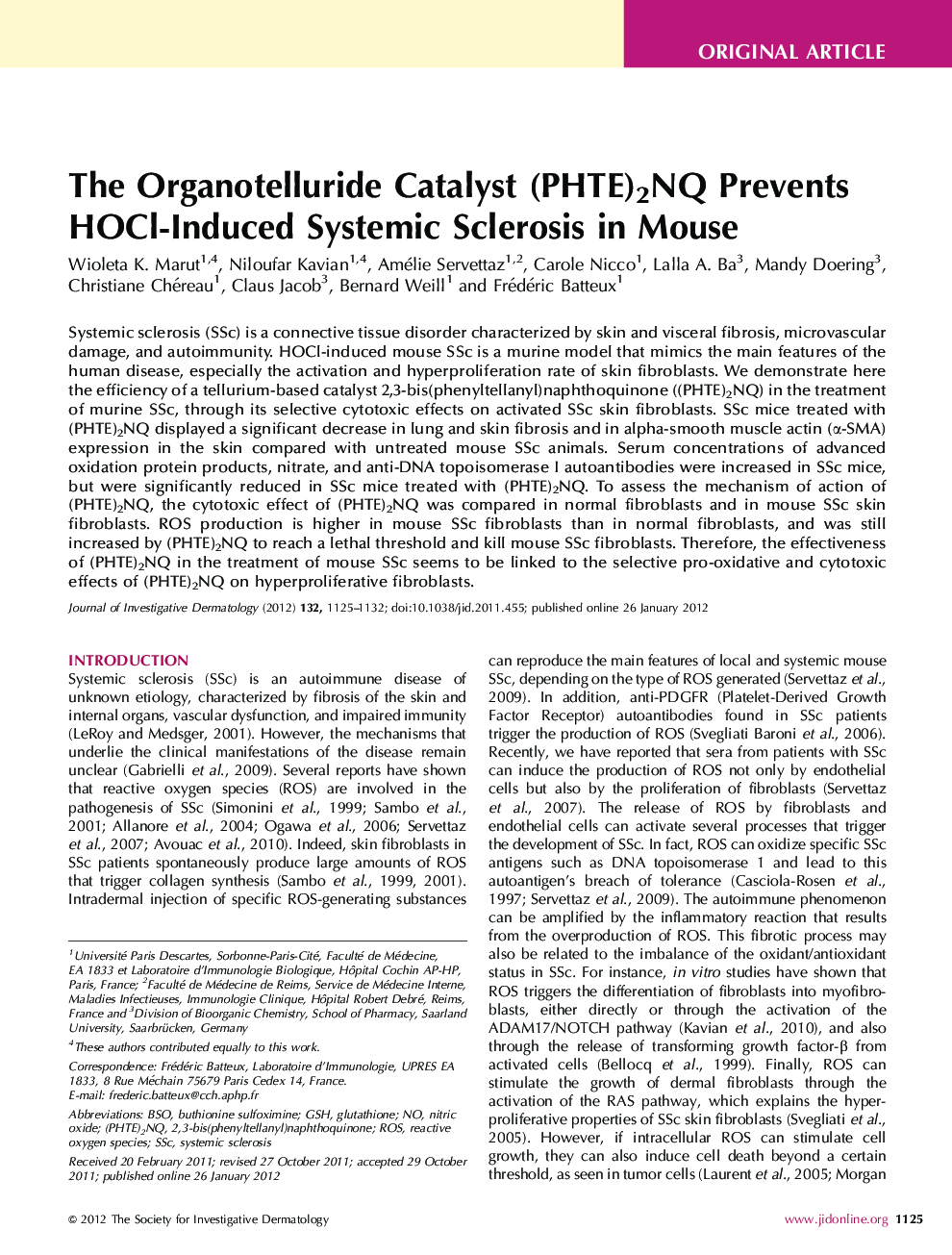| Article ID | Journal | Published Year | Pages | File Type |
|---|---|---|---|---|
| 6078111 | Journal of Investigative Dermatology | 2012 | 9 Pages |
Abstract
Systemic sclerosis (SSc) is a connective tissue disorder characterized by skin and visceral fibrosis, microvascular damage, and autoimmunity. HOCl-induced mouse SSc is a murine model that mimics the main features of the human disease, especially the activation and hyperproliferation rate of skin fibroblasts. We demonstrate here the efficiency of a tellurium-based catalyst 2,3-bis(phenyltellanyl)naphthoquinone ((PHTE)2NQ) in the treatment of murine SSc, through its selective cytotoxic effects on activated SSc skin fibroblasts. SSc mice treated with (PHTE)2NQ displayed a significant decrease in lung and skin fibrosis and in alpha-smooth muscle actin (α-SMA) expression in the skin compared with untreated mouse SSc animals. Serum concentrations of advanced oxidation protein products, nitrate, and anti-DNA topoisomerase I autoantibodies were increased in SSc mice, but were significantly reduced in SSc mice treated with (PHTE)2NQ. To assess the mechanism of action of (PHTE)2NQ, the cytotoxic effect of (PHTE)2NQ was compared in normal fibroblasts and in mouse SSc skin fibroblasts. ROS production is higher in mouse SSc fibroblasts than in normal fibroblasts, and was still increased by (PHTE)2NQ to reach a lethal threshold and kill mouse SSc fibroblasts. Therefore, the effectiveness of (PHTE)2NQ in the treatment of mouse SSc seems to be linked to the selective pro-oxidative and cytotoxic effects of (PHTE)2NQ on hyperproliferative fibroblasts.
Related Topics
Health Sciences
Medicine and Dentistry
Dermatology
Authors
Wioleta K. Marut, Niloufar Kavian, Amélie Servettaz, Carole Nicco, Lalla A. Ba, Mandy Doering, Christiane Chéreau, Claus Jacob, Bernard Weill, Frédéric Batteux,
